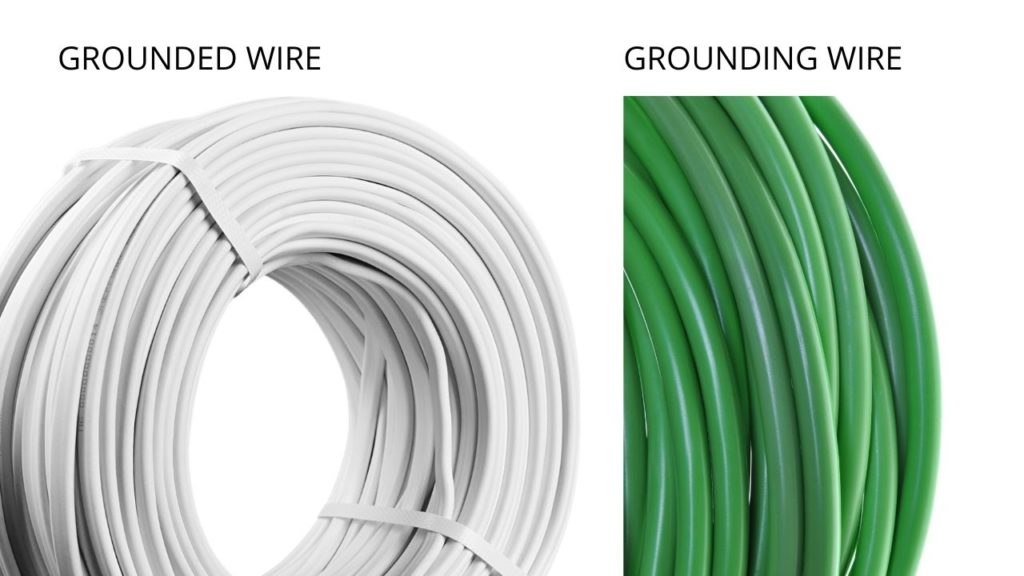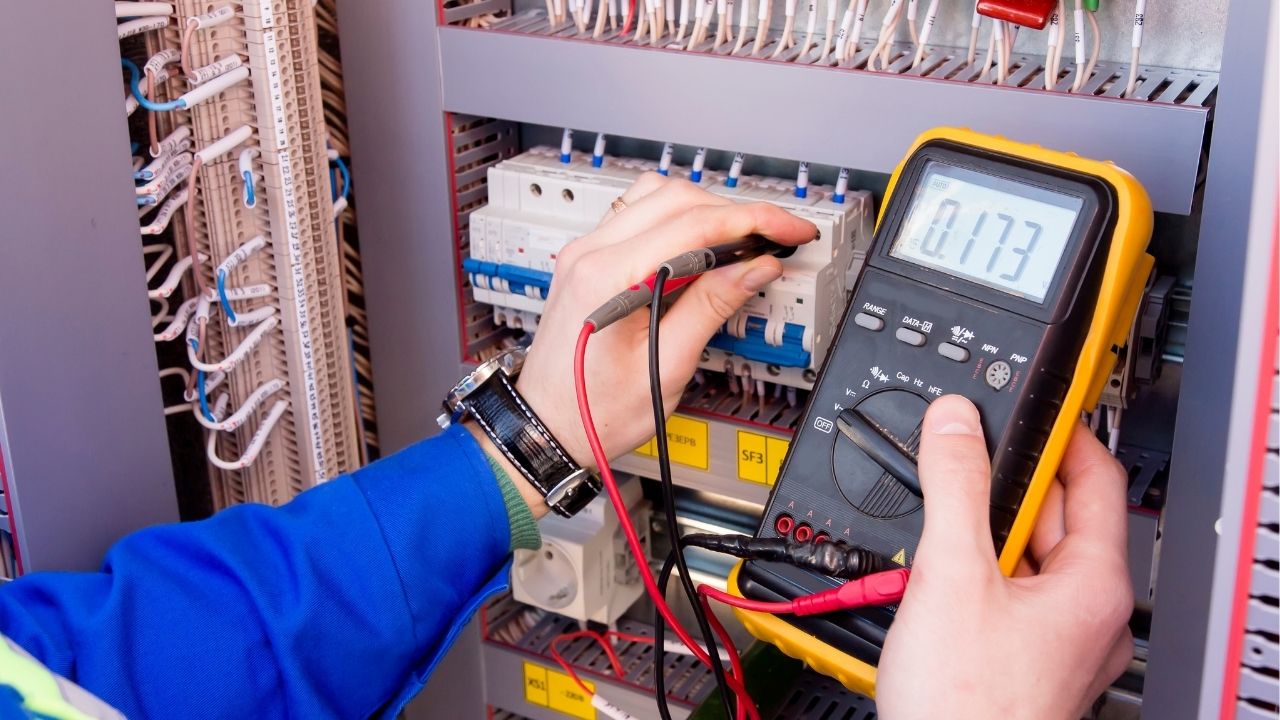The ground wire is vital. Easily identifiable because of its green casing, the ground wire protects consumers from unstable current, which is why the authorities expect contractors to add ground wires whenever they build new houses. But if the ground wire is supposed to remove unstable currents, does it have voltage?
Does Ground Wire Have Voltage?
A ground wire has a few millivolts. A higher voltage shows that your electrical system has a leak, which should worry you.
Proceed carefully, and wear rubber gloves where necessary. Talk to a contractor. Find out if some sort of wiring error occurred. Don’t ignore this issue.
Remember, there’s a difference between the grounded and grounding wire. Most people use those terms interchangeably, but they don’t mean the same things. The grounded wire is also the neutral wire. Every circuit requires one because it takes the current back to the panel.
While the grounded wire is white or gray, the grounding wire is green.

Grounding wire doesn’t carry electricity in most situations. It will only transmit electricity when a fault occurs, such as a malfunction. The green wire will respond by providing a path for that current to the earth.
Does this mean that the grounding wire has voltage?
The neutral-ground voltage should be 2 volts or less under load situations.
Related Post:
Why Is There Voltage On My Ground Wire?
A circuit has a hot, neutral, and ground. The hot wire brings the current to the appliance. The neutral line creates a return path, while the ground provides an alternate route in case of a malfunction. People tend to compare the neutral and ground because they both terminate on the Earth Ground Buss.
Electricians expect a measurement of the neutral-ground voltage to return a reading of 0 volts. But if your readings are not 0, you can blame the voltage on the ground wire on the following:
1). Stray voltage is leaking from the hot wire to the neutral or ground. These leaks are problematic. If these wires touch each other, you could short your system. A ground line with voltage can shock people if they touch grounded objects.
2). According to this ESP Surge X White Paper, you can blame N-G voltage on voltage drops. Even though copper is a decent conductor, it can still allow resistance to build up if the wire is too long.
If the load increases drastically, a long wire between the breaker and service outlet can create a voltage drop along the neutral wire, leading to N-G Voltage when you measure the neutral voltage in reference to the ground.
3). If you work in a commercial building, it probably uses three-phase Wye or Delta. If you have an old distribution infrastructure that shares the undersized neutral connection between the three phases, introducing modern electronic loads can create imbalances in the three phases.
As a result, unexpectedly high volumes of current will flow through the neutral line. This creates neutral-ground voltages.
4). Some people tie the neutral and ground wires together. They do this away from the panel, allowing the current returning through the neutral line to energize the ground.
5). Look for signs of a corroded earth connection. Loose earth connections and corroded electrical boxes and conduits can also create problems.
How To Check If There’s a Voltage on Ground?
You need a multimeter. Set the device to the AC voltage setting (and 200V range). Place one probe in the neutral slot of the outlet and the other probe in the ground slot.
An even more detailed explanation of this process involves the following:
1). Set the multimeter to AC. If the multimeter has cutoff values, set it to the highest cutoff value.
2). Connect one end of the red lead to the port with a ‘+’ sign. Connect the black lead to the port with ‘COM.’ Don’t confuse these leads and their ports. Otherwise, you may cause a short circuit.
3). Place the other ends of the leads in the hot and neutral slots of a socket. The red probe goes to the hot slot while the black probe goes to the neutral. Check the readings and record them.
4). Connect the red probe to the earth port. Check and readings and record them.
5). You should see a reading of 5 volts or less. You should only worry if the reading between the live and earthing is near 0 because it shows that your house lacks earthing.
6). Connect the red probe to the neutral and the black probe to earthing. Record the readings. These readings do not matter if you don’t have earthing.
7). Take the live-neutral reading and subtract it from the live-earthing reading. This will show you the total leakage.
If you don’t know how to check the voltage on the ground, call an electrician, especially if you think something is wrong.
Hunker has provided a list of steps you can use to determine whether or not the ground has a current. You touch one probe to the ground wire and the other to the ground wire electrical post. The readings will warn you of any current moving between the two.
If you can detect zero voltage, everything is fine. Don’t forget to switch the breaker to the off position before opening the ground post and pulling the wire out. Flip the breaker to the on position when you’re ready to begin the test.
What Voltage Is Normal And When Should I Worry?
Two volts or less shouldn’t worry you. You should only show concern if your readings rise beyond the expected threshold. N-G voltage is not a mere inconvenience.
The phenomenon has several disadvantages, including:
- N-G voltage can create malfunctions in connected electronic equipment. Some of those malfunctions are slight. Others are significant.
- Stray voltage is a shock hazard. On farms, it can shock animals that touch grounded objects like metal fences. If the wires touch each other in such a situation, you may short the system. If the ground wire is sparking, an electrical fire can occur. The grounding wire is supposed to safeguard your home. But it can make things worse if it falls victim to stray voltage.
What To Do If There Is Voltage On A Ground Wire?
Hire a professional contractor. Ask them to scrutinize your system carefully. More than likely, they will identify signs of improper bonding and grounding. They will also locate any loose connections and corrosion.
Did someone tie the neutral to the ground somewhere? The electrician will find it. What if your previous contractor failed to connect the ground wires to the ground? Mistakes of this sort happen all the time, unfortunately.
Simply put, unless you have extensive experience in this field, you cannot perform these tasks. Your home’s electrical system is not only dangerous but complicated.
The chances that you can find the source of the leak are tiny. And even if you do, you don’t have the skill to fix it. An electrician can install dedicated wires between the breakers and outlets, increase the sizes of some of the wires where necessary, check the circuit to ensure that every component adheres to the NEC’s practices, etc.
Oversizing the wires rarely occurs to the layperson. But this is an excellent solution for settings where the cables are too long. Increasing the gauge compensates for the voltage drop. Though, in some cases, you have to spend a lot of money to replace the wiring. But the expense is worth it to keep your friends and family safe.

